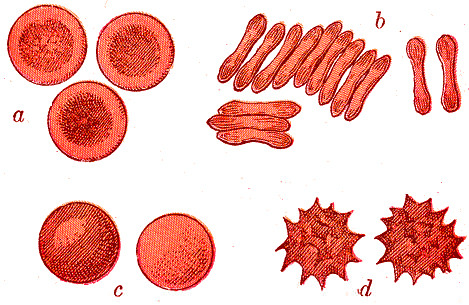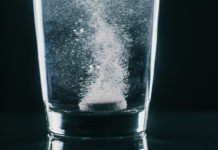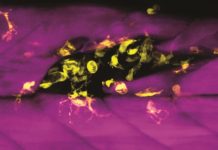By John Steinke, L.Ac.
Increased thickening of blood – or elevated blood viscosity – is a common age-related condition that contributes to a number of significant health problems. In addition to impairing circulation and nutrient exchange at the cellular level, when blood is too thick, cardiovascular function is stressed, placing an increased workload on the heart while reducing cerebral blood flow and contributing to the formation of dangerous blood clots. While conventional medicine relies on blood thinning agents (aspirin, coumadin, warfarin, etc.) to reduce viscosity and limit the incidence of heart attacks and strokes, little attention is paid to the deleterious effects of “blood stasis” – the gradual, systemic reduction of healthy blood circulating throughout the body’s web of tiny, microcapillaries responsible for conveying oxygen and nutrients to tissues at the deepest cellular level
How Damaged Blood Cells Impair Oxygen Delivery
No physical process is more fundamental to life than respiration – the intake of oxygen and release of carbon dioxide. Healthy red blood cells (erythrocytes) absorb oxygen gathered in the lungs for delivery to cellular tissues by means of a vast capillary network woven throughout the body. To support this process the bone marrow must produce a continuous supply of new blood cells, giving birth to an astonishing 2 million fresh red blood cells every second. Each day the body produces over 200 billion new red blood cells, and at any given moment there are over 25 trillion blood cells in circulation in the body.
Unlike other body tissues, red blood cells lack a central nucleus, consisting of a flexible outer membrane packed with hemoglobin – the unique protein molecule that allows cells to absorb, transport and release oxygen. Since red blood cells are about 25 percent larger than the body’s smallest blood vessels, the flexibility of this outer membrane is what allows the cells to fold over so they can squeeze into the tiniest microcapillaries to deliver oxygen to tissues.
Each red blood cell has a “shelf life” of approximately 120 days. As they near the end of their lifespan, the outer membrane become inflexible and begins to stiffen, making it difficult for the cells to fold. This loss of flexibility makes the cells more prone to damage from sheer stresses as they are forced into the smallest capillaries. Over time this damage transforms the once smooth and flexible blood cells into rigid, jagged structures that can no longer pass quickly into the lungs, nor reach into the deepest peripheral capillaries to deliver oxygen.
When old red blood cells are too damaged to be useful they are routed to the spleen where they are destroyed and eliminated from the body. Throughout life, the creation and destruction of red blood cells continues on a regular basis.
As with many physical processes, advancing age can slow down the birth and death cycle of red blood cells. As blood cell production drops, the elimination of old damaged cells also begins to slow down. Over time the proportion of non-functioning red blood cells in circulation tends to increase. As the balance of healthy cells declines, distribution of nutrients and oxygen to tissues is impaired, and removal of biological waste products slows down. Additionally, as older, stiff red blood cells careen through the circulatory system, the fragile microcapillaries are damaged as they interact with the mal-formed cells.

Another problem that occurs with aging red blood cells is the increased production of rouleaux formations. Rouleaux formations occur when damaged red blood cells become sticky and misshapen, allowing the cells to clump together (See example ‘b’ in Fig. 1, above). As these stacks of red blood cells increase, it becomes more difficult for the individual cells to pass through the capillaries. Rouleaux formations are especially problematic for diabetics, and contribute to the development of microvascular occlusive retinopathy.
Additional factors known to contribute to increased whole blood viscosity include elevated hematocrit and fibrinogen concentrations. Elevated cholesterol levels and hypertension have also been shown to increase blood viscosity and contribute to increased risk for ischemic heart disease and stroke.
Reducing Viscosity for Healthier Blood, Improved Microcirculation
As a professor and physician, Dr. Yan received extensive training in both Western and Traditional Chinese Medicine (TCM). And in Chinese medicine blood stagnation is considered to be the primary underlying cause of many issues. When blood stagnation occurs, the body’s internal organs don’t receive their normal nutrients, and waste products aren’t carried away at a sufficient rate. This impedes the organs from performing their functions, resulting in weakness and aging.
Dr. Yan recognized that the Chinese view of blood stagnation had a strong corollary in Western medicine – especially in the case of blood sugar issues that affect microcapillaries and blood flow to the retinas, kidneys, and peripheral nerves. Basically, this can be viewed of as an accelerated form of normal aging in the way it relates to blood composition and circulatory issues.
Noting the similar role circulation plays in aging Dr. Yan theorized that many of the age-related health issues he observed in his older patients might be traced to underlying blood and circulation issues. He also believed that these issues were affecting vital tissues and organs.
Dr. Yan joined with other leading medical researchers at the Shanghai Medical Hospital to form a new research team called the Blood Stasis and Aging Research Group. The research group gathered blood samples from young and elderly volunteers for evaluation. They quickly noticed that blood samples from young adults were thinner and had a brighter red color than the samples from the older adults. Intrigued by this simple visual correlation between blood stagnation and aging, the researchers wanted to test the beneficial effects of a number of natural herbs on blood and microcapillary function.
After eight years of gathering clinical data on microcirculation and evaluating changes in blood flow, Dr. Yan’s team arrived at a formula made up of 10 powerful herbs that were shown to promote overall health, enhance energy, and maintain healthy circulation.
Dr. Yan’s proprietary blend of herbal extracts, Vital Cell®, has been shown to aid in controlling age-related increases in blood viscosity, improve microcirculation, increase blood flow, reduce plasma viscosity, and repair capillary damage while restoring internal organ function. Vital Cell has also been shown to exert a positive effect on the shape and health of red blood cells, leading to improved oxygen uptake in the lungs and proper delivery of oxygen to cells.
In one 30-day study of Vital Cell, peripheral hemograms revealed that structural abnormalities of red blood cells were significantly reduced, leading to increased restoration of normal cell structures. At the end of the study the researchers concluded that Vital Cell could aid in improving the quality of circulating red blood cells commonly observed in aging and various cardiovascular disorders.
In another study of 50 patients using Vital Cell for thirty days, researchers noted significant improvements in albumin protein levels and the albumin/globulin ratio, indicating a reversal of conditions that promote the clumping of red blood cells into rouleaux formations.
Clinical Benefits of Dr. Yan’s Circulatory Support Formula
In addition to restoring circulatory performance and de-aging blood components, Dr. Yan’s Vital Cell formula has been clinically proven to enhance energy and improve blood circulation while reducing many of the biomarkers associated with human aging. The following is a partial list of conditions shown to have improved in a clinical study involving 150 elderly patients receiving Dr. Yan’s circulatory support formula:
- Chest Pains and Tightness
- Palpitations
- Insomnia
- Coughing, Shortness of Breath
- Dizziness
- Edema (Puffiness of Lower Limbs)
- Poor Appetite
- Mood and Complexion
- Blood Pressure
- ECG
- Microcirculation
- Immune Function
- Plasma Proteins
- Renal Functions
The study compared healthy individuals, ranging in age from 50 to 89 years old, with patients diagnosed with hypertension, coronary heart disease and other age-related illnesses. Each patient was given Vital Cell twice daily. Some patients were treated in two, four-week sessions, with a 5 to 7 day break between sessions, while others were treated continuously, with no breaks. The observation from these cases demonstrates that Dr. Yan’s Vital Cell formula produces profound anti-aging effects while providing a range of therapeutic benefits for those with illnesses related to the aging process.
















[…] Click title to view full article on Blood Viscosity […]